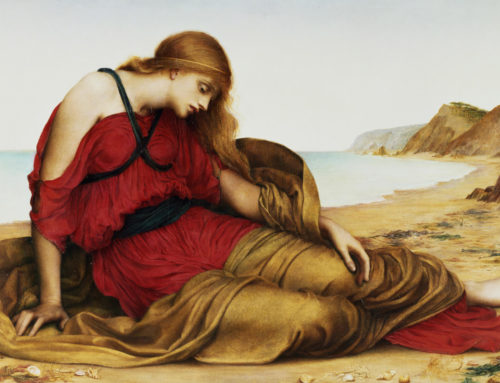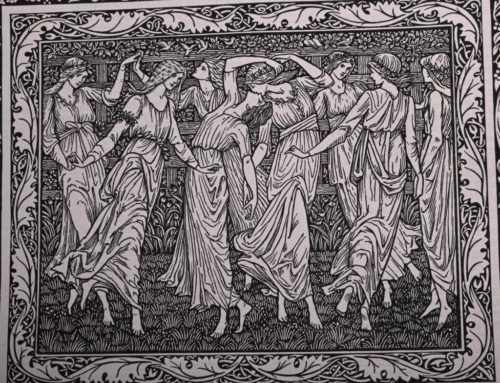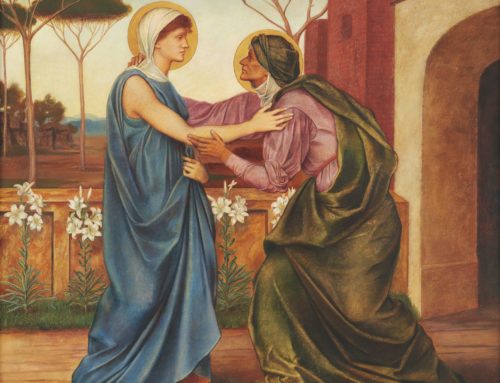During the Victorian era, exploration, discovery, and curiosity were hallmarks of society, albeit the elite tires. These societal developments led to new movements, such as Aestheticism – beauty for beauty’s sake rather than historical or religious inquiry and narrative – and Spiritualism – the belief that one’s soul would reach enlightenment through a series of personal challenges. Love has many incarnations: yearning and desire, unrequited love, and lovers separated by death. The emotion is a trial and triumph of life.
It is strongly suggested that the modern Valentine card was conceived in Victoria England, attributing to the era’s fascination and interest in the subject of love. Although the First Industrial Revolution transitioned the world into a new manufacturing age and ultimately brought great wealth to Britain, love and the tales of romantic figures remained a steadfast theme to Victorian era audiences, and the powerful representation resonates with present viewers.
This triptych by Dante Gabriel Rossetti (1828–1882) depicts the story of the adulterous lovers Palo and Francesca, who suffer in the Second Circle of Hell, where the lustful reside, for they committed sins of the flesh. In Dante’s Inferno, Francesca relates how love was her undoing: wed to an old and deformed man, she eventually fell in love with Paolo da Rimini, her husband’s younger brother. When reading the Arthurian legend of Lancelot and Guinevere, Francesca and Palo noted parallels to their own secret, illicit love. When Francesca’s husband discovered their transgression, the young lovers were killed, and Paolo and Francesca are doomed to spend eternity in the Second Circle of Hell.
In the left panel of the triptych, Palo and Francesca are depicted reading the romance of Lancelot and Guinevere. The central panel depicts Dante and Virgil’s horrified reactions to the lovers’ tale. The final scene on the right depicts the banishment of the lovers to the Second Circle of Hell. Francesca and Palo embrace, uncaring of the inferno surrounding them. The pair are portrayed against a background of flames, which calls to mind depictions of angels, and distorts the line between ruin and salvation.
Simeon Solomon’s (1840–1905) ‘Sappho and Erinna in a Garden at Mytilene’ (1864) depicts the passion between Erinna and Sappho, two ancient Greek, female poets. Sappho’s written works are defined by the love between women. Victorian writers and scholars were fascinated by Sappho’s work when fragments of her poetry were discovered and translated.
In the painting, Sappho embraces Erinna. The inclusion of rose petals, a pair of turtle doves, and a marble statue of a woman – potentially Aphrodite – creates an atmosphere of love. A lyre and a scroll suggest that Sappho was in the midst of writing Erinna a poem or song, both of which are romantic actions of devotion and love. However, there is an underlying danger and unkind jeer to the scene. The crow to the left of the pair of turtle doves mocks their billing, and thus the embrace of Erinna and Sappho, which the turtle doves mirror.
In his own life, Solomon faced persecution and discrimination due to his homosexuality, yet strove to demonstrate same-sex love into the public domain, predominantly via his artistic pieces and exhibitions. This artwork makes his actions clear: although same-sex relationships were not acknowledged overtly, Solomon voices the same-sex desires and relationships that proliferated in Victorian Britain, and the love that flourished but was not deemed conventional.
Sappo and Erinna in the Garden at Mytilene by Simeon Solomon (c) Tate
‘The Little Sea Maid’ (1880–1888) highlights Evelyn De Morgan’s (1855–1919) interest in Spiritualism, and the concept of the eternal soul. This artwork is inspired by Hans Christian Andersen’s ‘The Little Mermaid’ (1855), which centres of the tale of the Sea King’s daughter, who rescues and falls in love with a human prince. The Little Mermaid’s price for a human soul and physical form is her voice, which is readily sold to the Sea Witch. De Morgan depicts the Little Mermaid finding comfort in the sea at night, and dipping her new-fangled feet in the waves. Her expression is forlorn, for she was told by the Sea Witch that she will never return to the sea. In the distance, a castle is visible on the clifftops, representing the humanity the Little Mermaid so desired.
It is not surprising that De Morgan was drawn to the tale of ‘The Little Mermaid’ as a medium through which to explore Spiritualism. The belief system centres on the concept of the eternal soul, and here the Little Mermaid years to experience human love and attain a human psyche. The red robe has a variety of connotations: the bold colour symbolises the passion, infatuation, and love she feels for the prince, as well as martyrdom, for she sacrificed her underwater home and family, as well as her voice and merfolk body for her humanity. She is a tragic heroine, caught in the snare of love, questioning the price she has paid.
Considering the cultural norms and tides of the Victorian era, it is no surprise that the period was interested in love. In Britain, and quickly followed in Europe and America, there was an increase in marriages based on companionship and love rather than convenience and political alliance or strategy. This occurrence led to this type of relationship being explored and represented in literature and art.
The three pieces above centre on themes of love embody the cultural shift Victorian art underwent, and also encompass strong questions and critiques of love. These works fall within pieces that harken back to antiquary or medieval times, and exhibit more reciprocal passion. Francesca and Palo are happy in their love, although it was prohibited by their contemporaries; Sappho and Erinna represent same-sex love, while acknowledging the discrimination such relationships evoked, even though they were present in Victorian Britain, and both prior to and since within society; and the Little Mermaid evokes questions about the importance of mutuality, passion, and reciprocity in a relationship. These pieces break ranks in terms of traditional depictions and celebrations of love, offering new conventions of romance.
This blog has kindly been written by volunteer Hannah Crichton




